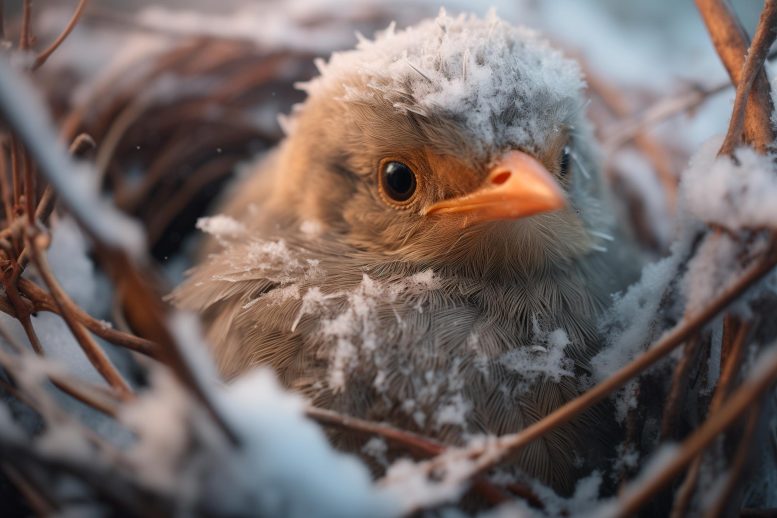
Climate change is causing songbirds to nest earlier in spring, but this shift exposes them to increased temperature variability, including cold snaps and heatwaves. A study by the Cornell Lab of Ornithology found that these extremes lead to more nest failures, particularly affecting nestlings.
Nestlings are the most vulnerable to temperature extremes
Many songbirds are nesting earlier in spring because of warmer temperatures brought about by climate change. But the shift brings another danger that is especially deadly for nestlings: greater exposure to temperature variability in the form of cold snaps and heat waves. Such extremes result in more nest failures. These findings come from a Cornell Lab of Ornithology study published today (November 16) in the journal Nature Communications.
Temperature Variability’s Impact on Nesting Success
“When we talk about temperature changes, the focus is mostly on averages,” said co-lead author Conor Taff, a researcher in Cornell University’s Ecology and Evolutionary Biology Department. “But all creatures, including humans, interact with weather conditions right in the moment, not with long-term averages. Even a one or two-day period when it’s really cold or really hot can be incredibly challenging even if the average temperature hasn’t changed. Changing temperature averages and temperature variability are two different components of climate change.”
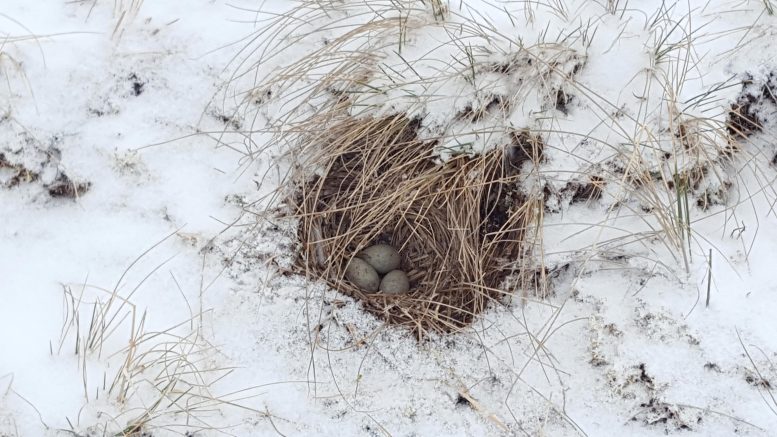
Horned Lark nest during a cold snap. Credit: Devin R. de Zwaan
The Study’s Analysis
To understand how temperature variability might affect nesting success, the researchers analyzed 300,000 breeding bird records submitted to the Cornell Lab’s NestWatch project between 1995 and 2020. They pinpointed the coldest three-day day period and the hottest three-day period for each one of the nests and then looked at whether those values predicted lower nesting success. Success was measured by how many nestlings survived to fledge.
Findings
“We found that 16 of the 24 species we studied had reduced reproductive success when a cold snap occurred during the incubation or nestling stages,” Taff said. “Eleven of 24 had reduced success when a heat wave occurred during the breeding season. Aerial insectivores were the most sensitive to temperature extremes, especially cold.”
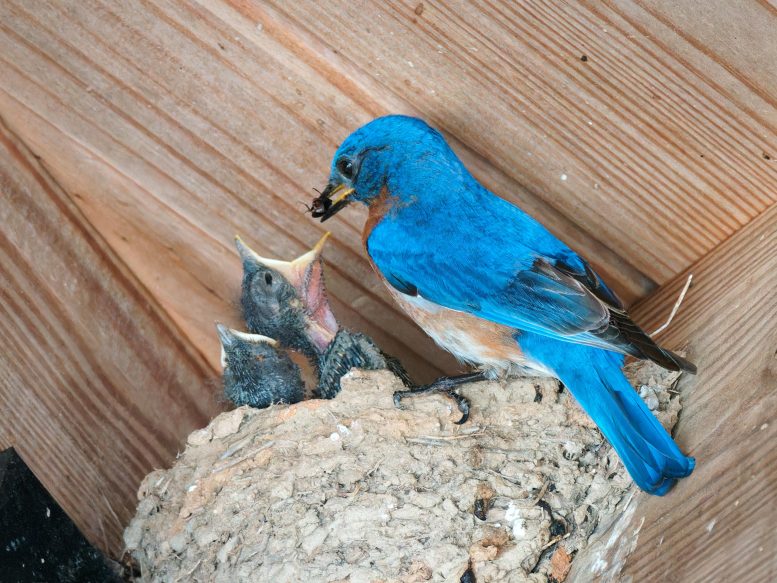
Eastern Bluebird feeding chicks. Credit: Nancy Miller, courtesy Cornell Lab of Ornithology
Impact on Nestlings
The vast majority of birds feed insects to their young, regardless of their final diet, and cold snaps reduce insect availability. If these episodes occur when nestlings are most vulnerable, they can trigger a mass die-off. During a cold snap, adult birds may move away to find survivable conditions which leaves eggs and nestlings exposed to cold and lack of food.
“It’s the nestlings that really get hit hard because they can’t regulate their own body temperature yet,” said co-author Ryan Shipley, a Cornell University Ph.D. student at the time of the research. “Nestlings also grow at an exponential rate during the first week or two of life and if insect activity drops because of a cold snap, the young birds likely won’t survive.”
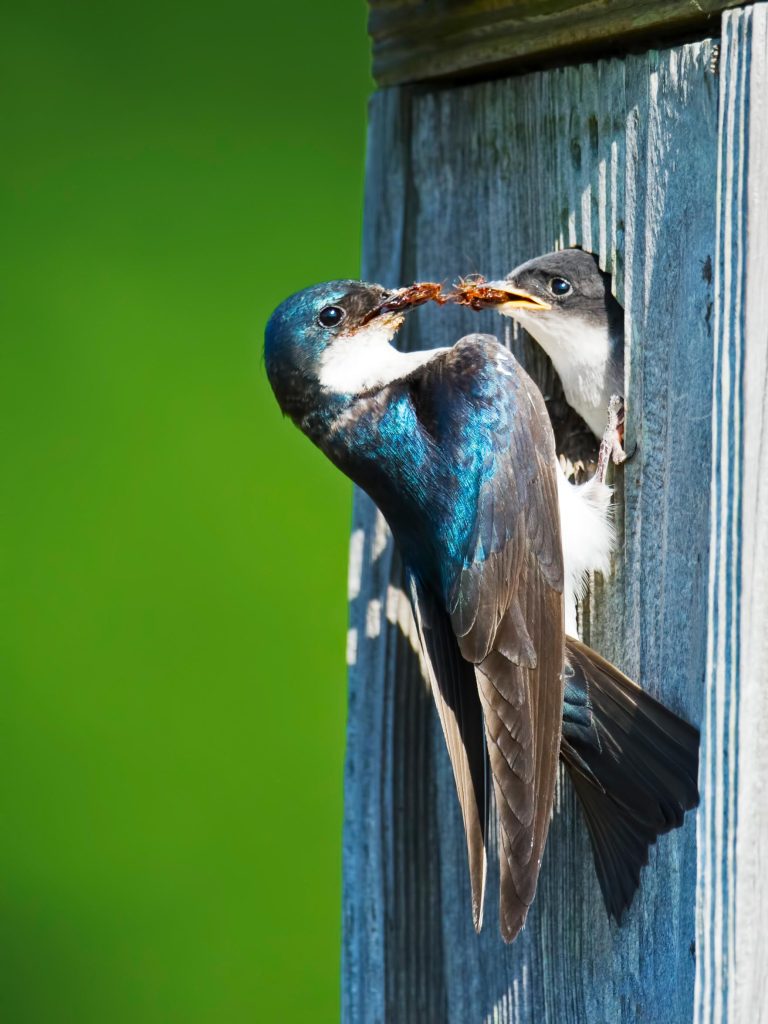
Tree Swallow feeding insects to chick. Credit: Brian E. Kushner, courtesy Cornell Lab of Ornithology
Long-Term Consequences
Taff and Shipley also examined 100 years of weather data to see if there have been changes in the timing of cold snaps and heat waves during the March through August breeding season in the United States and Canada. Although they found no clear pattern in the timing of temperature extremes, they do note that it’s getting warmer everywhere.
“Even if nestlings somehow manage to survive a cold snap or heat wave, there may still be long-term consequences affecting the overall health of the birds,” notes Shipley. “We’re only looking at a brief snapshot during early life and cannot measure long-term health in an unbanded wild population.”
Previous Tree Swallow studies by these authors have shown that temperature during development is important because it’s directly linked to the rate of nestling growth and their body mass when they fledge. That, in turn, influences how likely they are to survive, make it through migration, and return to breed the following year. Therefore, changes in the variability and timing of temperature extremes and shifts in the breeding season can combine to bring about life-changing consequences for individuals and for bird populations.
Reference: “Inconsistent shifts in warming and temperature variability are linked to reduced avian fitness” by Conor C. Taff, and J. Ryan. Shipley, 16 November 2023, Nature Communications.
DOI: 10.1038/s41467-023-43071-y


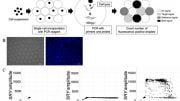

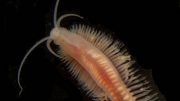
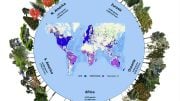



Be the first to comment on "Songbird Nesting Under Threat: Climate-Driven Temperature Extremes"